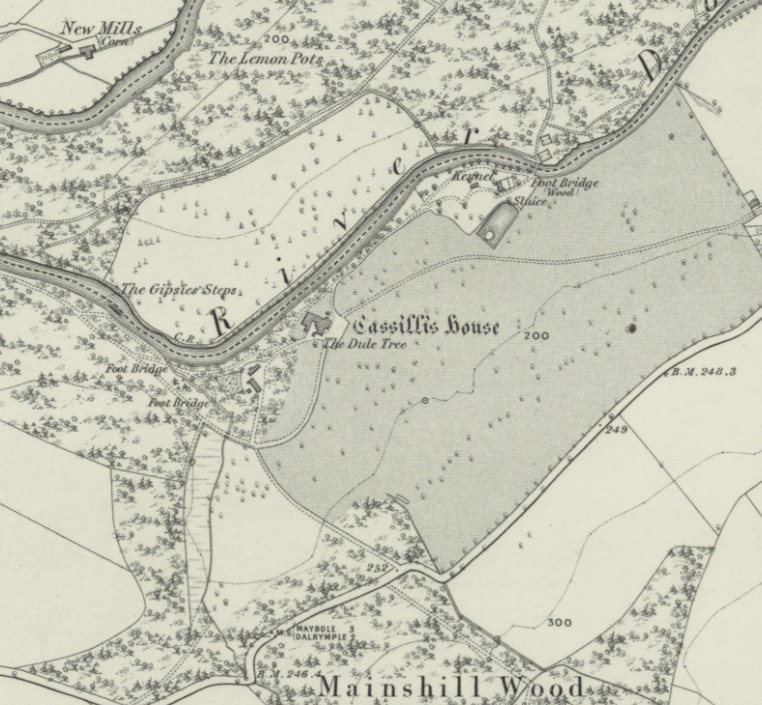Cassillis Brick and Tileworks, Maybole, South Ayrshire
Source – Sourcing Scottish Redwares by George Haggarty, Derek Hall and Simon Chenery – In those areas of Britain where there were suitable clays and, generally, little useful stone available, bricks started to become popular in the mid-1400s. However, this was not the case in Scotland where there was an abundance of good building stone. There is no documentary or archaeological evidence for the production of bricks in Scotland, prior to 1610 when Nathaniel Udwart made his application to produce bricks, etc. (RPC xiv fol. 151a). Later and sometime prior to 1643, one Tobaccos Knowes (Tobias Knox?) received a patent for ‘the making of bricks under several conditions’ (Anderson 2000, 25). The first reference to the production and supply of bricks, rather than tiles, in the upper Forth area, maybe at Throsk, where 600 bricks were supplied by John Matson in 1721 for building a chimney in Stirling (Harrison 2002, 465). A number of other Scottish brickworks seem to have been established around this time. For example, there were two in Prestonpans, but these were probably of small scale; the figures for brick exports from this area in the period 1742 – 70 suggest that it was not until c1760 that the exportation of bricks began to flourish (Gibb 1979,18). In Ayrshire, the production of brick and roof tiles began in the year 1767 at Cassillis House when the Earl of Cassillis persuaded William Spender to come from England to ‘apply himself in making Tiles and Bricks at All proper Seasons for two years’. A cursory look at the records for brick exports from the Clyde suggests the same sort of pattern, but exports rose very quickly by the beginning of the 19th century. According to the ‘Clyde Commercial Advertizer’, about 750,000 bricks yearly were shipped to the West Indies and North America in 1807 – 8. Much more difficult to determine, and probably much less important in trade terms, were the very small brick and tile enterprises begun by the major landowners to fulfil their own needs, and probably those of their neighbours. However, by 1784 brickmaking was large and important enough an industry to attract an excise duty of 2s 6d per thousand and, by 1802, production was running at 714 million. After the abolition of this and later duties, it rose to1,724 million in 1840 (Bremner 1969).
Below – 1856 – Cassillis House Estate (The brick and tileworks would have been situated nearby).


